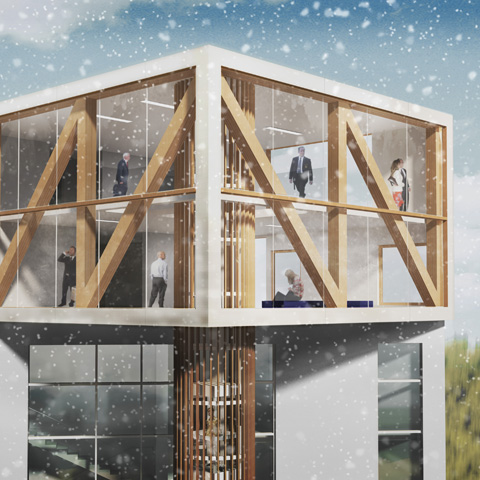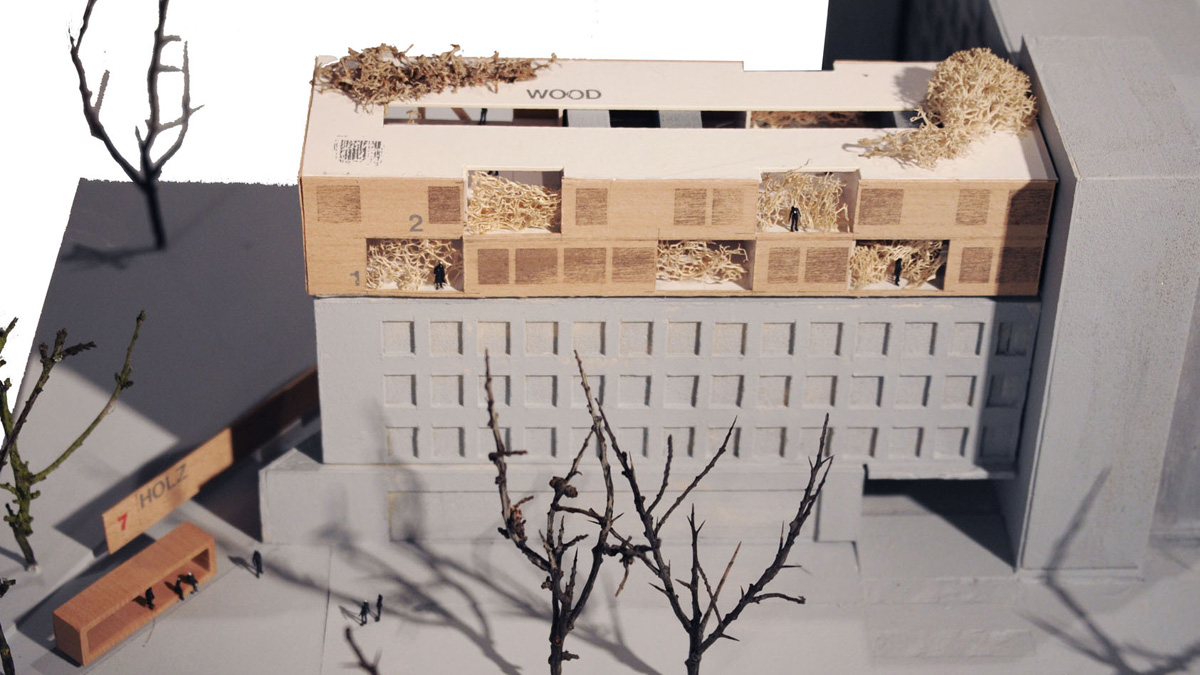Adding hybrid wooden structures as storey to a building has the great advantage that interventions in the existing structure can be extremely reduced compared to conventional solid structures. Thanks to intelligent logistics, the measure can be carried out with less interference for the residents.
Existing support structures, especially from the 1960s and 70s, very often have the potential to be expanded by a few storeys – provided that wood materials are chosen as the building material. In contrast to a solid construction, a wooden structure places less strain on the structure already built. The main advantages are rational production, a very short construction time compared to solid construction, and better values in terms of energy efficiency. Wooden structures with the prefabricated multi-layer wall structures and the exact precision of CNC-controlled machines are ideally suited.
The design shows the possibilities that structural timber construction offers when transforming existing buildings with the help of new materials such as BauBuche. Due to the excellent material properties of laminated veneer timber made of beech, new areas can be opened up very economically, including aspects of sustainability. The compacting and expansion of existing structures provides important and interesting results for the sustainable development of our cities. Existing infrastructures can be better used, new synergies arise.

